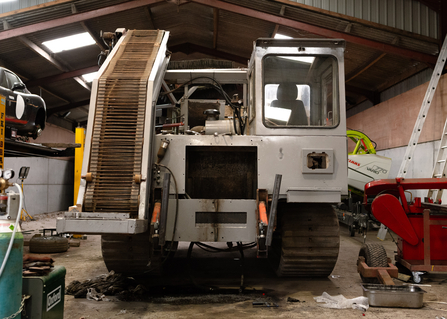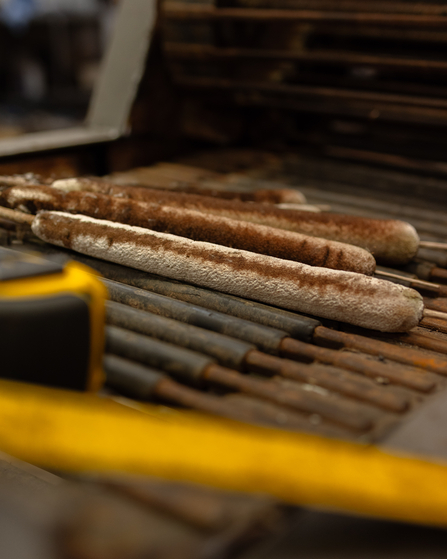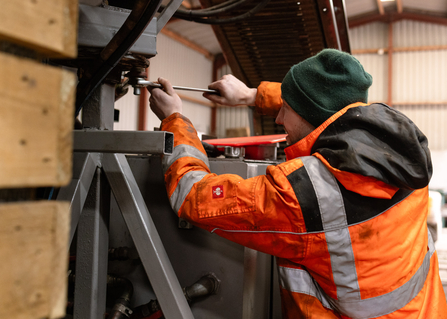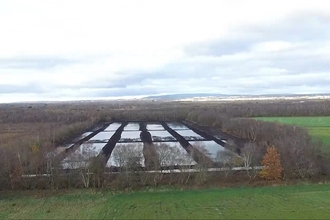Wetter farming could be a sustainable and profitable way to manage much of the UK’s currently drained lowland agricultural peat, and to further this aim and understand the practicalities of wetter farming we are running a number of wetter farming trials.
Find out more about our wetter farming trails
Two of our trials are growing a commercial crop of bulrushes, and so far we have figured out how to re-wet the peat, how to manage the water levels, and how to sow the seeds – but how are we going to harvest the bulrushes from a wet field?
Meet Edna, an old apple harvester that has had the ‘Scrapheap Challenge’ treatment, thanks to the skilled hands of farmer Cameron Edwards.





